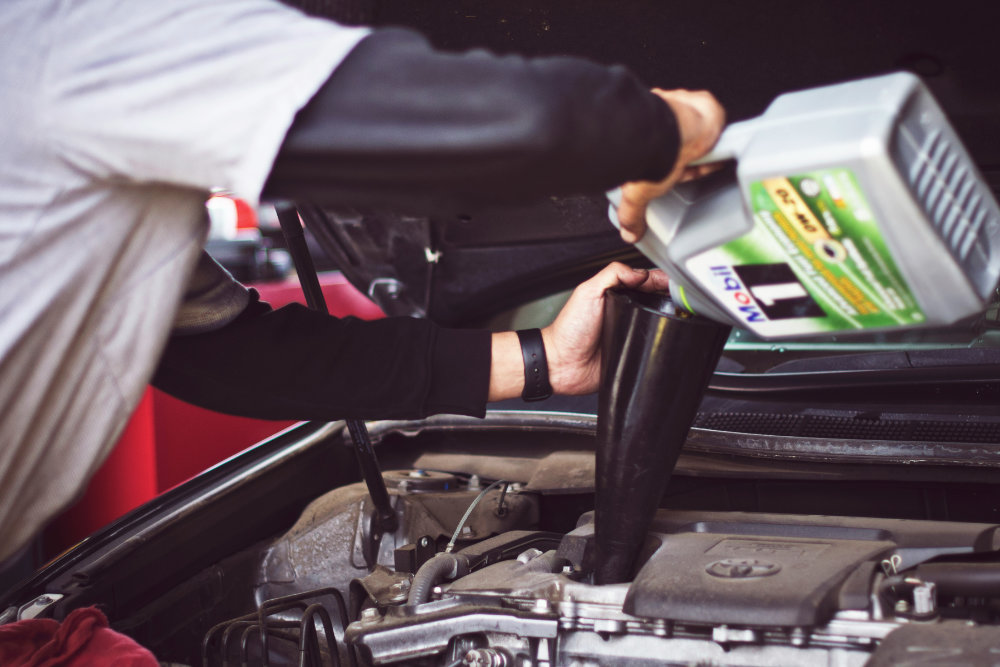Every experienced motorist states that it is necessary to constantly monitor the level of engine oil, change it on time and do not save money on buying quality oil. But, why is it so important? Actually, everything is quite simple: if you want your engine to work properly and not to break down, you have to pay attention to the quality of engine oil. What is engine oil? Let’s look at the example of what is the Peugeot 208 engine oil. So, it is a mixture of two components – base oil and additive package. As base oils are used oil fractions obtained during oil refining, or artificially created organic compounds (it is also possible to mix them). It is designed to reduce friction between engine components, helps to keep the operating temperature in the engine, and also delays the appearance of corrosion. So, we conclude – quality oil that is changed on time helps prevent premature engine wear. Fun fact: even if your car is idle in the garage or if you drive it to the shop, you still need to change the oil once a year. The fact is that over time it loses its functional properties and succumbs to oxidative processes. Thus, understanding how to behave with engine oil is a necessity that you can not ignore.
How do I know if there is too little or too much oil in the engine?
So, there is a special dipstick for manual checking of oil level in every car. It is important to realise that any other dipstick than the one designed for your car is not suitable for checking. What do I need to do to check it?
- Place the car on a level surface without any inclination.
- Start the engine and warm it up to working temperature. Next, switch off the car. And only then, after 5 – 10 minutes you can start the test.
- After that, open the bonnet and take out the dipstick.
- Next, it should be wiped with a clean (necessarily lint-free) cloth. Be sure to pay attention to the marks that indicate the maximum and minimum oil level.
- After that, place the dipstick all the way to the place from which it was pulled out. Only then you can assess the oil level in the engine. Normally, it should be a maximum of 70 per cent above the lower mark (ideally between 50 and 70 per cent).
In addition to using the dipstick, there are also a number of devices that will tell you when it is time to check the oil. Oil level sensors are often triggered the moment the oil level drops. The moment this happens, a warning will appear on the dashboard. By the way, it is worth knowing that in many models of the car at such a problem, the engine lock is triggered. Accordingly, you will not be able to drive anywhere.
When do I need to top up the oil in my engine?
It is important to note that not every engine can be topped up. In many cars, the only option is to replace it completely. However, there is a line of engines in which oil consumption is normal. It is for cars with such an engine that the following information is relevant. Thus, if the oil level is below the middle between the marks of the minimum and maximum amount of oil, it will not be superfluous to add a little oil. If the level is close to the minimum level, it is necessary to top up the oil.
The engine is absorbing a lot of oil: what is the problem?
One of the reasons why your car is burning oil can be called a malfunction of some engine units. The second problem is the presence of leaks. Let’s analyse together the 5 most common reasons why your engine needs more oil than you are used to.
- Cylinder and piston ring wear. In fact, this problem is very common. What to do about it? Identify the cause in time and replace the piston rings or rebuild the cylinders.
- In some cases, gaskets and oil seals wear out, which leads to oil leakage. The solution: replace the gaskets.
- In order to pump oil through the engine, every car has a pump. If it is defective, there is not enough lubrication for the engine. Accordingly, the latter tries to compensate for this by increasing oil consumption. What to do about it? Go to a service centre and have the pump checked.
- Another cause of high consumption is cheap oil from unscrupulous manufacturers. Not only can it not fully fulfil its functions, but more oil will be needed. It’s a dubious saving, isn’t it?
- Defects in the PCV system (oil vapour recovery system): Oil vapour can escape into the combustion chamber and burn there, instead of going back into the lubrication system. What to do. Check the PCV system.







